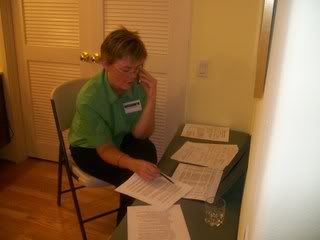As those of us who have had the wonderful opportunity to live in Berkeley understand, the city isn’t always as liberal as it’s cracked up to be. The city consistently fought against affordable housing, homeless shelters – it even threatened to stop BART from being built unless it was built underground (a battle Berkeley finally won).
In these instances Berkeley has shown that it is no different from other parts of California that oppose progressive urbanism. Homeowners who are convinced that they can maintain a 1950s style urban landscape even in the face of population pressure, housing costs, and environmental/energy crises tend to dominate public discussions about urban change, and insist that their views be privileged over all others. This is true in supposedly liberal, progressive Berkeley, as much as it is in the San Fernando Valley or – dare I say it – Orange County.
It’s from that regressive mindset that, as today’s San Francisco Chronicle reports, a proposed bus rapid transit project is being blocked by Berkeley residents.
That’s what AC Transit is proposing for its busiest route in the East Bay, the 15-mile-long stretch from Bay Fair BART Station in San Leandro to downtown Berkeley.
The $400 million bus rapid transit project would look a lot like light rail, with elevated stops in the middle of the street and dedicated lanes free of cars. Buses would run every 10 minutes and sail through intersections.
But the project may hit a roadblock in Berkeley, where some neighbors and merchants are lobbying furiously against it, saying it would worsen traffic and be the death knell for the beleaguered Telegraph Avenue shopping district.
And if Berkeley rejects the plan, the entire project is imperiled – which leaves some people in town wondering how one of the region’s most green-thinking cities could say no to public transit.
There’s more…
The article quotes some locals opposed to this visionary project:
“It’s a gigantic waste of money,” said Mary Oram, a longtime Berkeley resident who lives south of the UC campus.
“To me, it looks like they’re preparing for light rail. Light rail is wonderful if you’re in the middle of nowhere, but we already have BART just a few blocks away. It doesn’t make any sense to me.”
Oram and other opponents said AC Transit buses aren’t brimming with passengers through Berkeley, while merchants worry that customers will shop elsewhere, deterred by the traffic or lack of parking if the city decides to eliminate parking along Telegraph to create an additional lane for cars.
I don’t think this person really understands much about public transportation. Light rail is NOT terribly useful “in the middle of nowhere” – instead its best use is actually in densely populated urban areas. Like Berkeley.
And yes, BART is “a few blocks away” but it serves a totally different corridor. The AC Transit line that connects Bay Fair BART to Downtown Berkeley BART is already one of the system’s most popular lines, largely because it serves corridors BART does not. Anyone who has traveled along International Boulevard / East 14th Street, or Telegraph Avenue, is well aware of how isolated they are from the BART system.
More important is the effect on Telegraph Avenue. The Southside neighborhood in Berkeley has fallen on hard times of late – imagine my shock when last weekend I discovered that Cody’s had closed! – and part of this is in fact because it’s not terribly easy to get to. Driving down Telegraph is already very difficult, and parking is nearly impossible to find, especially on a busy weekend.
Mass transit, such as bus rapid transit (BRT) is directly designed to address these problems. By providing dedicated lanes, it allows the system to avoid traffic. That in turn allows it to be quick and reliable. And that is what attracts riders, who above all else prize those factors when deciding to use public transportation.
Ultimately, cities like Berkeley need to embrace this if they are to have a meaningful impact on climate change, on energy independence. The views of Berkeley residents who oppose these projects are shaped by their faith that the 1950s can last forever – that California’s urban landscape can continue to be dominated by low density, by traffic, by cars. This is simply not the case, and one would assume that of all places, Berkeley would understand that better than others.
Sadly, Berkeley doesn’t seem to understand it. If density’s main problem is traffic, wouldn’t a BRT system be a sensible method of cutting down traffic? Doesn’t Berkeley need to lead the way in the state, becoming a model to other cities in the fight against climate change?
As long as a small but powerful group of homeowners continues to get their way, imposing their unrealistic belief that the 1950s are still viable and desirable, cities like Berkeley will continue to struggle to break free of the auto-dependent lifestyle, will have an uphill battle in trying to bring in alternative forms of transit. And if Berkeley cannot be convinced to join the 21st century – how are we to convince the rest of California to do the same?
I’ll give the last word to a Berkeley urban planner who understands the importance of this issue:
“The City of Berkeley would have to be out of its mind to turn down a multi-million-dollar investment in public transit,” said Robert Wrenn, a city transportation commissioner and proponent of the rapid bus plan.
“We’d be the complete laughing stock. It would be a great embarrassment to the city.”

















